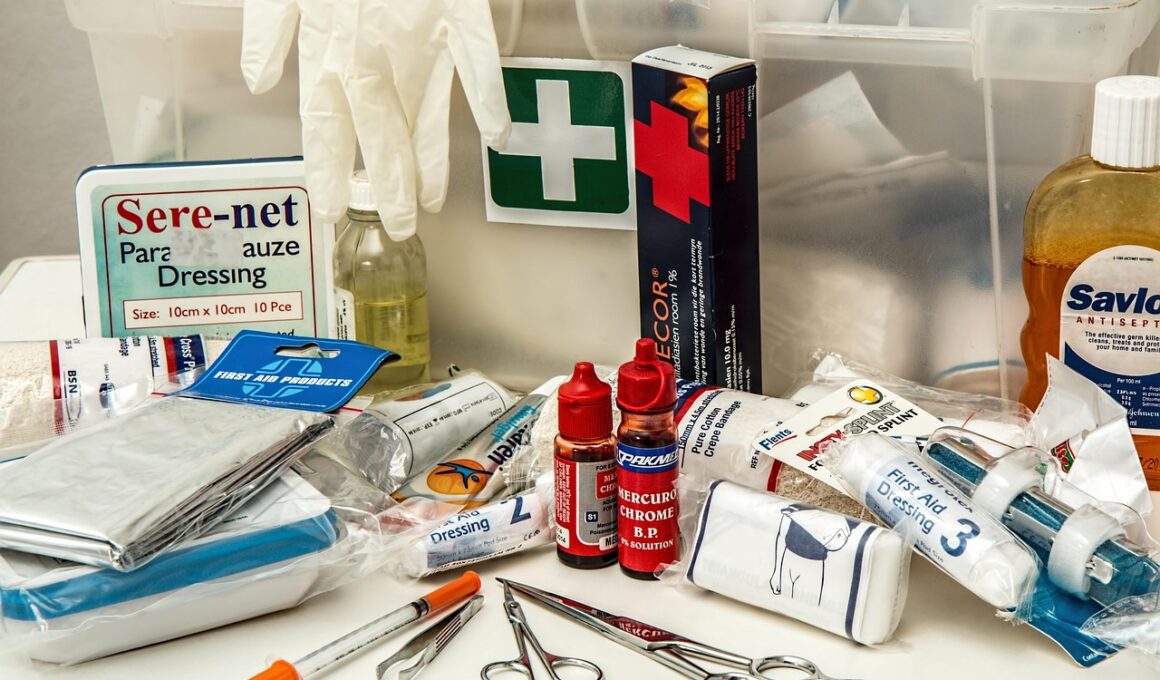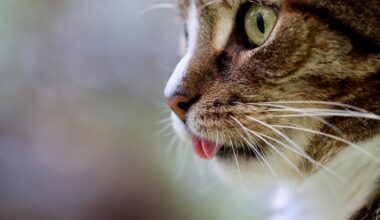An Overview of Cat’s Blood Volume and Composition in Emergencies
Understanding a cat’s blood volume is crucial in emergency situations, as it helps assess their health status. Typically, an average adult cat has around 60-70 milliliters of blood per kilogram of body weight. This volume is vital for transporting oxygen, nutrients, and hormones, thereby supporting their physiological functions. In emergencies such as trauma or shock, knowing this volume can guide the veterinary team in deciding whether to administer fluids or blood products. It is essential for keeping a cat stable while treatment occurs. During acute emergencies, a rapid assessment of blood volume can be done using various techniques, including palpation. In addition to volume, understanding the composition of blood in cats—comprising red and white blood cells, plasma, and platelets—is necessary. Each component plays a specific role in maintaining body health. Red blood cells transport oxygen, while white blood cells fight infection, showing the importance of each part of the blood. In emergencies, the composition can shift, impacting treatment decisions. Recognizing these details can significantly improve a cat’s chances of survival in critical situations.
In feline medicine, awareness of a cat’s blood type is also crucial. Specifically, cats have three primary blood types: A, B, and AB. Type A is the most common, especially among domestic shorthairs, while type B is more prevalent in certain breeds, such as British Shorthairs and Devon Rex. Mismatched blood transfusions can lead to severe reactions and complications, emphasizing the importance of blood typing before any transfusions. By knowing a cat’s blood type beforehand, veterinarians can reduce the risks associated during emergencies. Emergency situations often require quick decisions about blood transfusions or fluid resuscitation. These interventions necessitate a clear understanding of not just the cat’s blood volume but also of its type to provide safe and effective treatment. In emergencies, time is of the essence, and immediate access to transfusion compatibility can be life-saving. It’s crucial to have this information readily available, particularly in multi-pet households or animal shelters. Proper knowledge about blood types and their implications in emergency situations is vital for ensuring the best outcome for cats in need of urgent care.
Importance of Monitoring Blood Parameters
Monitoring blood parameters in emergency situations is essential for determining how a cat is responding to treatment. Parameters such as hematocrit, hemoglobin concentration, and platelet count can provide a wealth of information about their condition. Low hematocrit levels may indicate bleeding or anemia when the cat loses blood; these levels require immediate attention to prevent severe health repercussions. Similarly, changes in platelet counts can reflect underlying problems with blood clotting, particularly in trauma cases or any situation where bleeding occurs. Knowing these parameters can direct treatment protocols effectively. For instance, a veterinarian may opt for fluid therapy if dehydration is apparent. Conversely, they may initiate a blood transfusion if anemia is detected. Additionally, monitoring these values can help assess whether the emergency interventions are effective. Understanding changes in blood parameters over time helps veterinary teams make informed decisions quickly. In acute situations, efficiency is key, and sometimes, rapid diagnostics are necessary for effective treatment. In many cases, quick access to a complete blood count (CBC) panel can streamline treatment, helping stabilize the cat faster.
Beyond immediate interventions, understanding the impact of blood volume on organ function is critical for prognosis. The brain, kidneys, and liver are particularly sensitive to changes in blood flow and volume. If a cat has lost significant blood, their organs may not receive adequate oxygen and nutrients, leading to further complications. Prolonged hypoxia can result in organ failure, making early intervention vital. Therefore, emergency responders need knowledge of how blood loss affects these functions. Regular monitoring of vital signs, including heart rate and respiratory rate, can assist in evaluating organ perfusion. These vital signs provide clues about whether a cat is compensating for blood loss or deteriorating. Additionally, restoration of blood volume through intravenous fluid therapy can help revive organ function. When thinking about the complete overall health of an affected cat in an emergency, restoration of circulation is vital. Good veterinary practice ensures that both volume and composition are attentively assessed and restored where necessary, significantly enhancing a cat’s chances of survival when they are critically ill.
The Role of Plasma in Blood Volume
Plasma, the liquid part of the blood, plays a vital role in maintaining blood volume and composition. It consists mainly of water, electrolytes, proteins, hormones, and waste products. Plasma makes up about 55% of total blood volume in cats, indicating its importance in blood composition. The proteins in plasma, particularly albumin and globulin, are crucial for maintaining oncotic pressure, preventing fluid from leaking out of blood vessels. In emergencies, a cat’s plasma levels become significant. Following acute injuries or dehydration, plasma proteins may drop, leading to hypoproteinemia. This condition can affect fluid balance and overall health. It underscores the importance of monitoring plasma levels during treatment. Administering appropriate fluid therapy can restore plasma volume and enhance circulation. Veterinary teams often utilize crystalloids or colloids to manage situations involving low blood volume. Each type has specific protocols for use. Understanding how these fluids interact with a cat’s blood composition can help veterinary teams administer the best treatment. In summary, plasma is not just a liquid medium; it plays a pivotal role in a cat’s health, especially during emergencies.
In addition to understanding blood volume and plasma function, knowing the importance of electrolytes in hydration and overall health is crucial. Electrolytes like sodium, potassium, and chloride are vital for numerous cellular functions and maintaining fluid balance in the body. In emergencies, particularly with dehydration or shock conditions, cats can become imbalanced in their electrolyte levels. This imbalance can lead to various issues, including muscle weakness, arrhythmias, and potentially life-threatening conditions. For instance, significant drops in potassium can affect heart function, causing arrhythmias, while sodium levels are essential for normal cellular operations. Rapid assessment and treatment of electrolyte imbalances are therefore paramount in emergencies. Current practices often include performing a basic blood chemistry analysis to identify these changes quickly. Restoring these levels with electrolyte solutions can stabilize the cat during treatment. Recognition and restoration of electrolyte balance must be part of any emergency plan for cats experiencing blood volume changes. Thus, veterinarians need to quickly determine which fluids or treatments are necessary to correct any imbalances found during the emergency assessment.
Conclusion: Preparing for Emergencies
Preparing for potential emergencies involving cats means understanding their blood volume and composition on a deeper level. Consequently, pet owners should maintain readily accessible medical information on their cats, including blood type and previous health records. In emergency situations, this information can significantly impact treatment decisions and outcomes. Veterinary clinics should also be equipped for rapid blood typing and fluid resuscitation, particularly in multi-pet environments. Through proper education and preparation, both owners and veterinarians can enhance a cat’s chances of survival during emergencies. All veterinary professionals should focus on ensuring timely and appropriate interventions, reducing the impact of traumatic situations. Attention to these elements can significantly influence recovery strategies. Additionally, awareness of protocols for assessing and restoring blood parameters should be emphasized in emergency practice. Regular training updates for emergency responders about the latest treatment practices will also enable them to act quickly and effectively. Proper education around cat blood volume and composition can help everyone involved work cohesively in emergencies, ultimately resulting in better outcomes for cats needing urgent care. Cat owners should take the initiative to learn about these concepts and encourage veterinary preparedness for unforeseen events, ensuring better care for their beloved companions.
cat first aid


